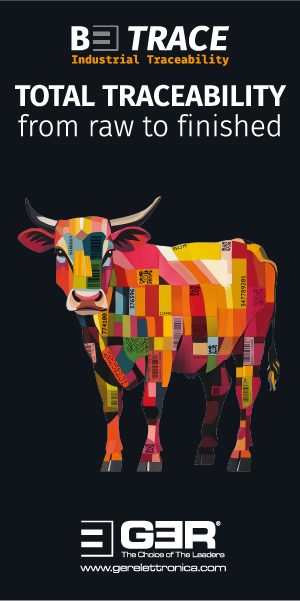Market Intelligence - 09.08.22
Macroeconomics
In the more than 20 years that we have been writing Market Intelligence, there has rarely been a period in which political events and developments have been of such great importance.
The times in which peaceful trade for the benefit of all was at the forefront seem to be over for the time being, and at present we can only hope that this new phase will not be prolonged. Until now, military conflicts were mostly proxy wars and did not threaten to spread across the world; but the situation looks much more unstable at the moment.
After Russia’s invasion of Ukraine in February, tensions are now rising in Asia. We mentioned the danger some time ago. The visit to Taiwan of the speaker of the US House of Representatives, Nancy Pelosi, is really only worth a footnote, but nevertheless it is being used by the Chinese government as an opportunity to put the question of Taiwanese independence back at the top of the agenda. After the developments in Hong Kong within the last few years and the military manoeuvres that the visit has now triggered, one has to ask what China’s intentions for Taiwan are. For the generations born after World War II, such mind games seem almost surreal.
Besides harm to human life, the damage to the world economy, and this of course includes China, would be unimaginably great and would very likely pulverise the increased prosperity of the last decades.
At the moment, there is not much left to do but hope that the situation will calm down again and that autocratic egos will not determine events.
The financial markets, which normally act as a very reliable gauge, still remain quite relaxed. The stock markets were able to recover somewhat in recent weeks, unemployment remains very low in most major nations and thus the loss of purchasing power triggered by inflation can be at least partially mitigated.
Fighting inflation remains the central issue for the national banks. After the interest rate hikes in the US and the Eurozone, the Bank of England has now followed suit and raised the base rate by 0.5%. The European Central Bank is trying to balance out the tensions within the Eurozone and is trying to dampen the rise in interest rates in the southern countries. It is doing this by buying government bonds of the weaker economies and divesting itself of those from the stronger ones. This is a very debatable method for a central bank that is supposed to represent an entire currency area.
The problem of energy prices is at least somewhat alleviated by the falling price of oil. For the Russian gas-dependent economies in Europe, however, the problem of supply and prices remains. After all, the price of a barrel of oil fell well below $100 and is thus no longer very far from the levels before the great crisis. In any case, it is no secret that there is no shortage of oil for the moment. Should economic development continue to cool down, the demand for oil would also decrease further and OPEC would then have to face a new market situation.
Despite all the crises and dangers, the market for precious metals is still unable to profit and the price of gold has not been able to exceed the $1800 mark.
Despite the major problems in Europe and the difference in interest rates between Europe and the US, the US dollar has not really been able to profit further. So far, there has only been a very short excursion below parity and in recent weeks a solid base has formed above parity. At the moment, it looks as if this will keep international investors happy until the end of the holiday season. However, major changes from September onwards would not really be a major surprise for anyone.
Leather Pipeline
In the northern hemisphere, we have entered the peak phase of the annual summer holidays. Almost all producers are on holiday and only a few have already resumed their work. For Europe at least, this means an almost complete standstill, as more and more companies have also moved their holiday schedules into the time window of the first three weeks of August. As a result, the entire supply chain is massively burdened and, at least in the raw materials sector, only a few supply options remain. One or two contract tanneries are still accepting goods, but in principle one can assume that more than two-thirds of deliveries are suspended for two or three weeks.
In the past, European suppliers always had the option of either stockpiling the goods in order to count on a revival of demand in Europe after the holiday period, or to try to find a corresponding sale in Asia as early as May, which would then make the goods ready for loading during the closure in Europe. In our estimation, this was only possible to a limited extent this year because, quite simply, the China lockdowns severely affected demand precisely during this period. In addition, the Asian market has been extremely price-sensitive in recent months and European hides, with a few exceptions, were not really competitive enough to secure sales.
The difficulties in international logistics add to this. Even if the extreme situation in shipments from Europe to Asia has eased somewhat, there are still considerable delays in loading the goods. This is for a variety of reasons. All problems can be resolved, but frankly no one is likely to claim that this summer will deliver a return to a normal situation.
Market situations like this naturally leave a lot of room for speculation and hypotheses. These, in turn, are very much driven by the intentions and interests of the individual market participants. If we stay in Europe, the meat industry there is gambling on a noticeable recovery in the demand for cattle hides from September onwards, and all of this is guided by the positive outlook provided by the automotive industry for production in the rest of the year.
Statements from the large European car producers are relatively uniform and after positive half-year results, one assumes a stable and increasing production from September to December. Under this impression and the simultaneously very positive picture provided by the luxury goods industry, one can definitely come to a positive conclusion for the raw hide markets in Europe. However, a not inconsiderable risk remains.
On the one hand, we have very low kill numbers to report in continental Europe in the past months. The reduced volumes have not really led to a shortage of product, which does not necessarily indicate a change in the market balance in the coming months. However, for all the optimism on the demand side, one must at the same time take into account the increasing beef production from September onwards. As far as the overall market is concerned, the question then remains over the extent to which there will be a uniform price trend or whether we will see a further divergence with the different rawhide types. Looking at the sheepskin sector in recent years, such a development would not necessarily be a surprise.
The considerable differences in value that have developed in the meantime between sectors are sometimes difficult to understand, but on the other hand they justify the current differences in the valuation of raw materials.
The massive price increases for food and energy, which affect Europe in particular, are leading to a considerable loss of purchasing power for the average citizen. In many countries in Europe, retail sales have already been declining significantly since May and all signs indicate that the statistical figures for the summer months will not be much better. We should not forget that consumption of standard consumer goods in the clothing and footwear sector has been far in excess of what is essential for quite some time. It means at the same time that restricting consumption in this direction for a certain period is not a particularly big restriction. The furniture sector in Europe has benefited considerably from the pandemic in recent years. Less out of home and more at home diverted some consumption into furniture and interior design. Here, too, it is assumed that this trend will be interrupted now.
In this context it is also remarkable that one hears more and more about too much stock in the warehouses. While one could hardly see special offers and discounts in the spring and one relied more on the price-setting possibilities in the retail trade due to inflation and stories about the upside-down problems, the weakness in sales is now causing very quick and great concern. Stocks of goods, of non-immediate needs, are often very well filled and sometimes even too well filled. If you follow the offers on the streets and on the internet closely, you will notice that the scope of special offers has increased considerably in recent weeks. The furniture trade is also desperately trying to lure customers into the shops with special offers.
What we are reporting here about Europe we could also see last week in reports from the US. There, too, big retailers are complaining about overstocking, which was still happening at times when consumer expectations were very different. Inflation is driving shoppers to discount stores and these have more than sufficient supply at very attractive discounted prices. If this information correctly reflects the current market situation in the US and Europe, this would of course have a lasting negative impact on ordering activity for the coming seasons. Excessive inventories limit the willingness and ability to place new orders, especially in times of rising interest rates. Uncertainty about future developments, logistical problems and falling real incomes make planning difficult and reduce the willingness to take risks among broad sections of the buying public.
Another large consumer market is also very difficult to assess at the moment. Of course, the Chinese government is currently trying everything to conceal and mitigate the major problems that are beginning to spread from the real estate sector. However, no one knows to what extent the all-powerful government will succeed in restoring investor confidence and the supposedly endless willingness to consume. Direct talks with contacts in China, as far as these are possible in today’s world, paint a different picture. The confidence in China’s rise and eternally increasing prosperity, which has been unbroken for decades, has developed considerable cracks. No one wants to express this publicly and criticism of government policy is, of course, very rarely heard. Nevertheless, private conversations paint a clear picture.
Many Chinese families have already been consuming on credit in recent years, relying on income growth to always make up for the debt. For those who then got involved in real estate investments that were, perhaps, too large, and used this to finance their cars and other expensive consumer goods, a high level of uncertainty is clearly noticeable. The question of whether the government’s restrictive covid-19 policy will continue in this form is also unanswered. It should be borne in mind that many employees in China will no longer have any income in the event of a closure and that the available budget will therefore be reduced very quickly. All this weighs on the mood in China and there, too, every purchase and every expenditure is currently being considered twice.
If this means that the outlook is already uncertain, to say the least, in three major consumer goods markets, then one can imagine that the clock is ticking very fast at the moment. Decisions on orders and production for the rest of the year must be made within the next eight weeks. From what we know and can see today, these decisions will certainly be made later rather than sooner. We believe that the Lineapelle in Milan at the end of September will probably be the turning point from which developments will be determined. The All China Leather Exhibition in Shanghai, scheduled for the end of August, has been postponed until the end of the year and the fair in Bangkok in October will be too new to settle things.
Under these circumstances, it is not surprising that the big hide producers are struggling for sales at the moment. Despite all efforts to present a positive picture, prices from the largest producers in the US are steadily crumbling. If you then look at the price differences between the official price lists and the levels actually paid in the end by the big buyers, the price developments are even more negative. For hides of lower quality, we will soon have reached the level that makes conservation and grading no longer economically viable. Since a sustainable reduction in slaughtering is not to be expected worldwide in the next few months, the supply will remain at least the same and thus more than ample. Demand will have to do the talking.
We really cannot report any news worth mentioning from the split market at the moment. This may be due to our sources or perhaps simply because there is nothing really new. On the one hand, demand from the collagen and gelatine sector is still satisfactory globally, but on the other hand, the massive increase in energy costs is making itself felt. Added to this is the fact that more and more hides can now be processed in this sector in an economically viable way, which greatly increases the supply. The demand for split for the leather industry is also varied, but nevertheless stable. However, the sharp increase in production costs is also making itself felt in this market, and since the value added here is also not particularly high in some cases, some manufacturers are already experiencing difficulties with their current contracts.
A similar situation can be seen in the market for lamb and sheepskins. Special skins still achieve very satisfactory sales, but in sum, the demand from the leather sector is not satisfactory. The big beneficiaries at the moment are the Middle East and also Turkey. Both markets are benefiting from the Western sanctions against Russia and are able to expand their sales and business significantly.
We stick to our basic market assessment. Short improvements and recoveries are not sustainable in our view and the fundamentals do not support a real improvement in the short term. It is possible that we are completely wrong in our analysis, but that will only become clear in September. Until we are told of a significant improvement in sentiment and a revival in the production chain, we see the risks in the mass leather market as greater than the opportunities. For their part, those in the luxury segment and in niches may take advantage of the opportunities and there may well be countervailing and positive developments. But that would be for the minority and would not solve the overall problem in the short term.












